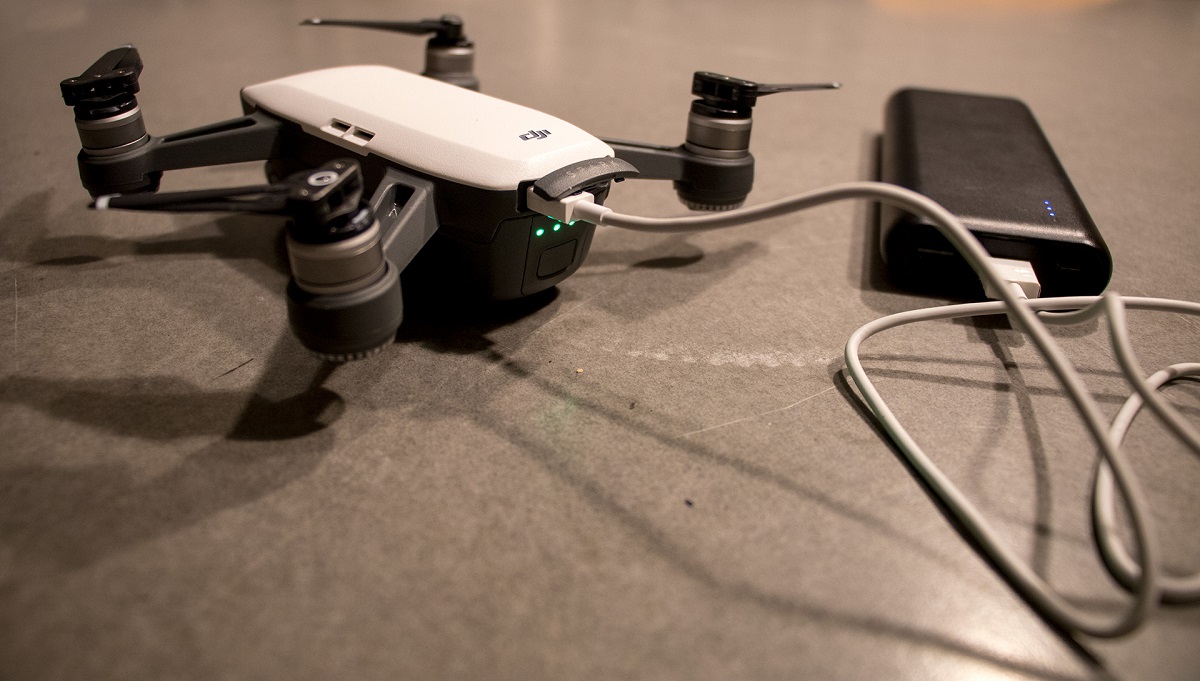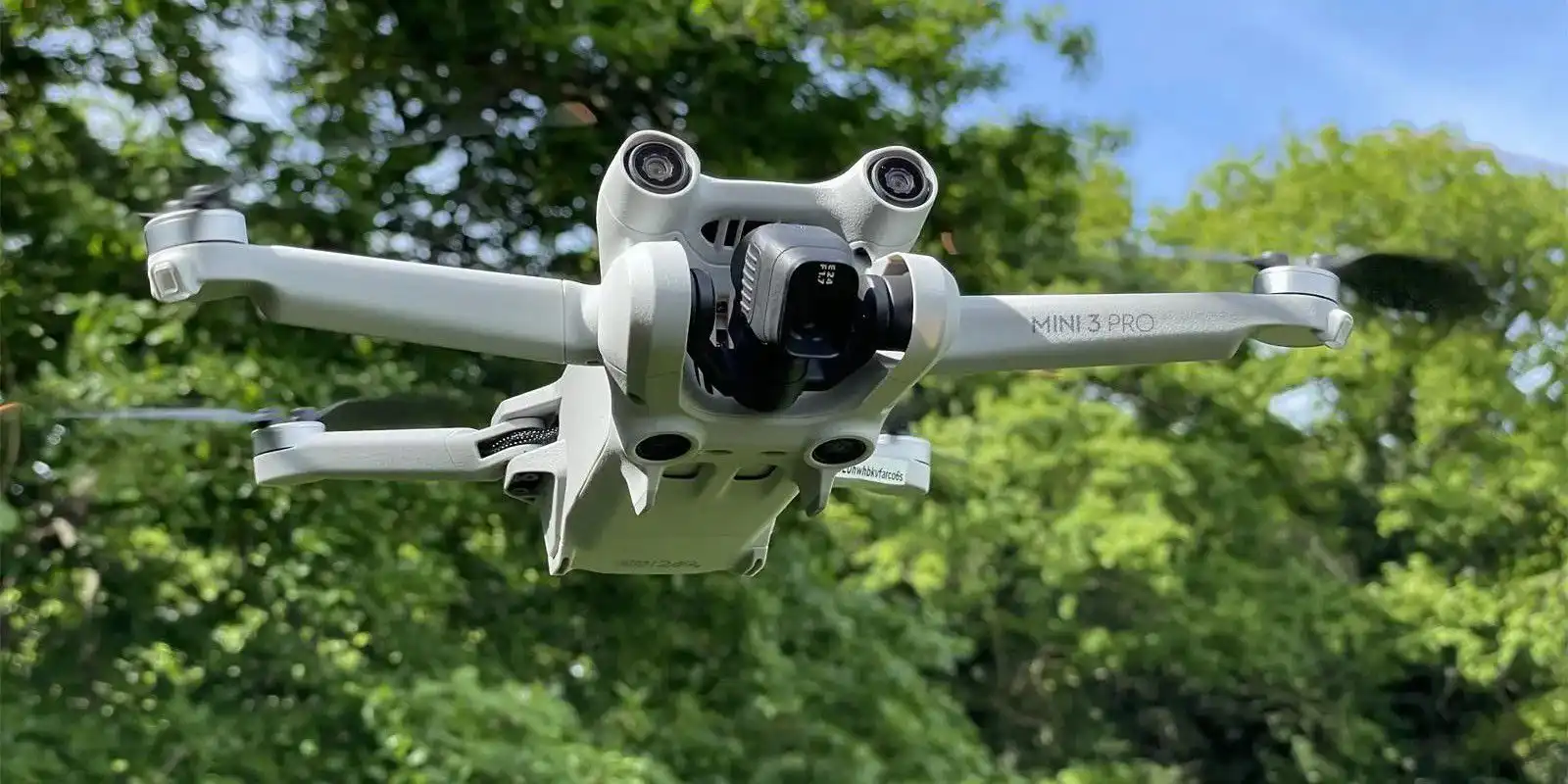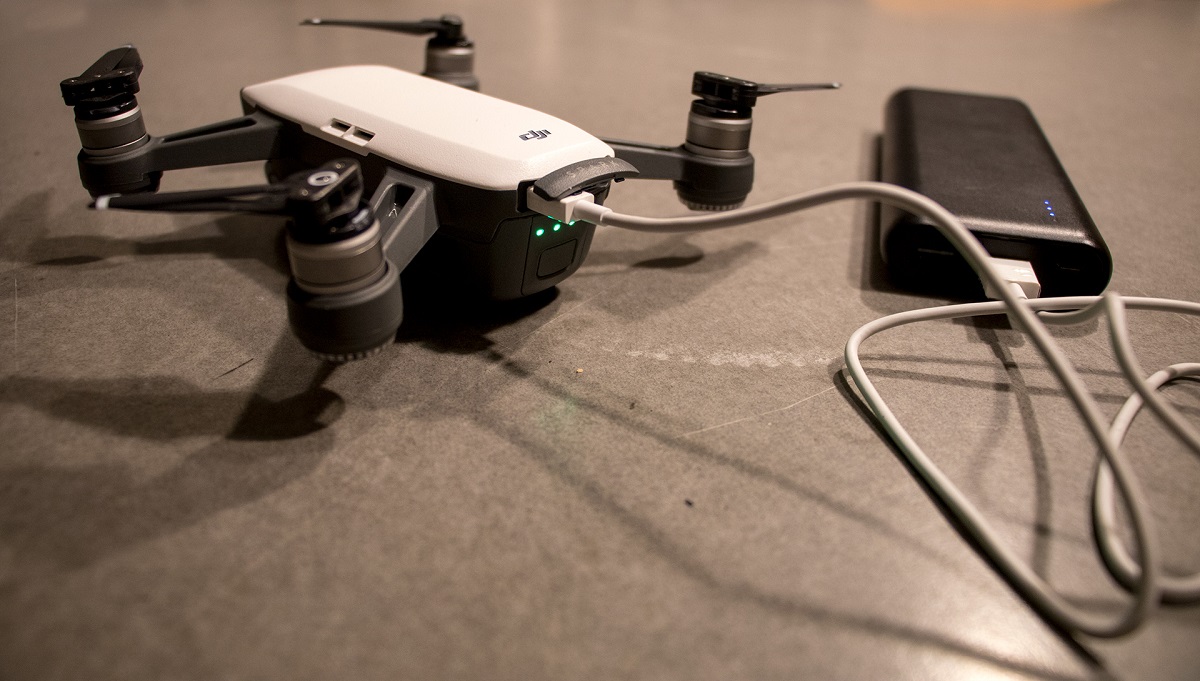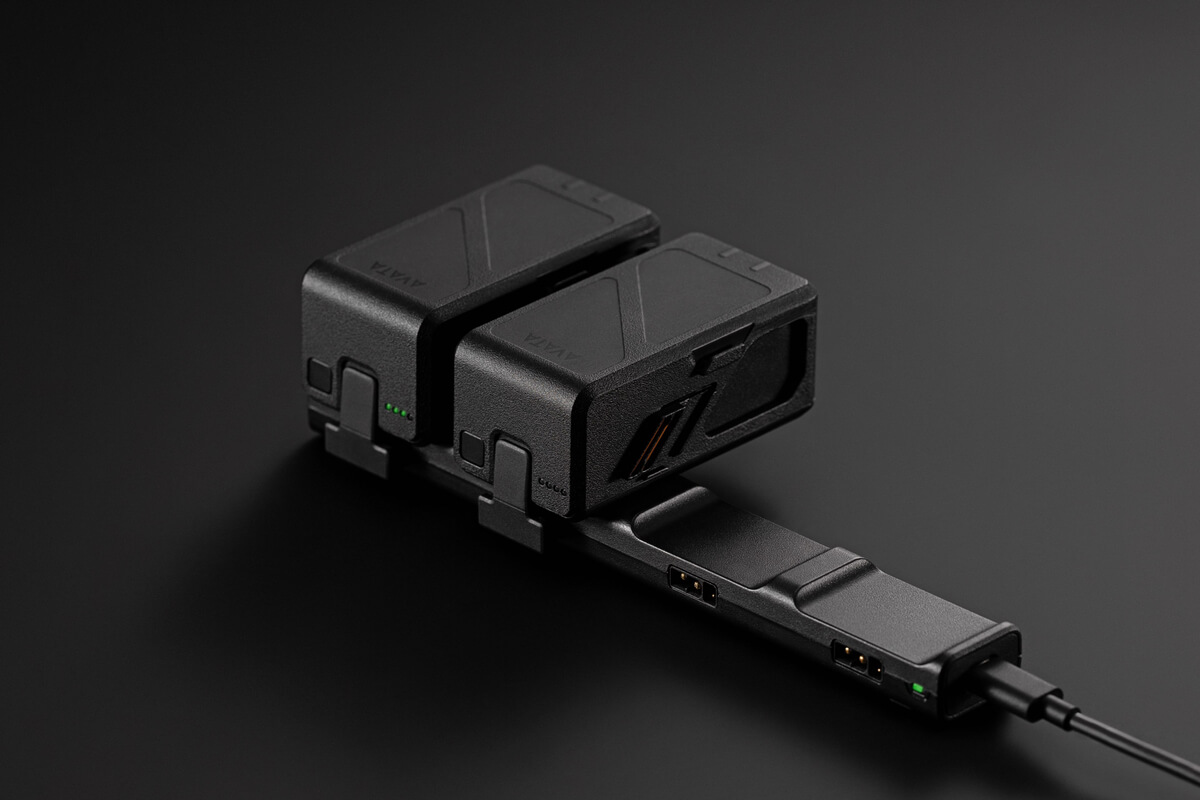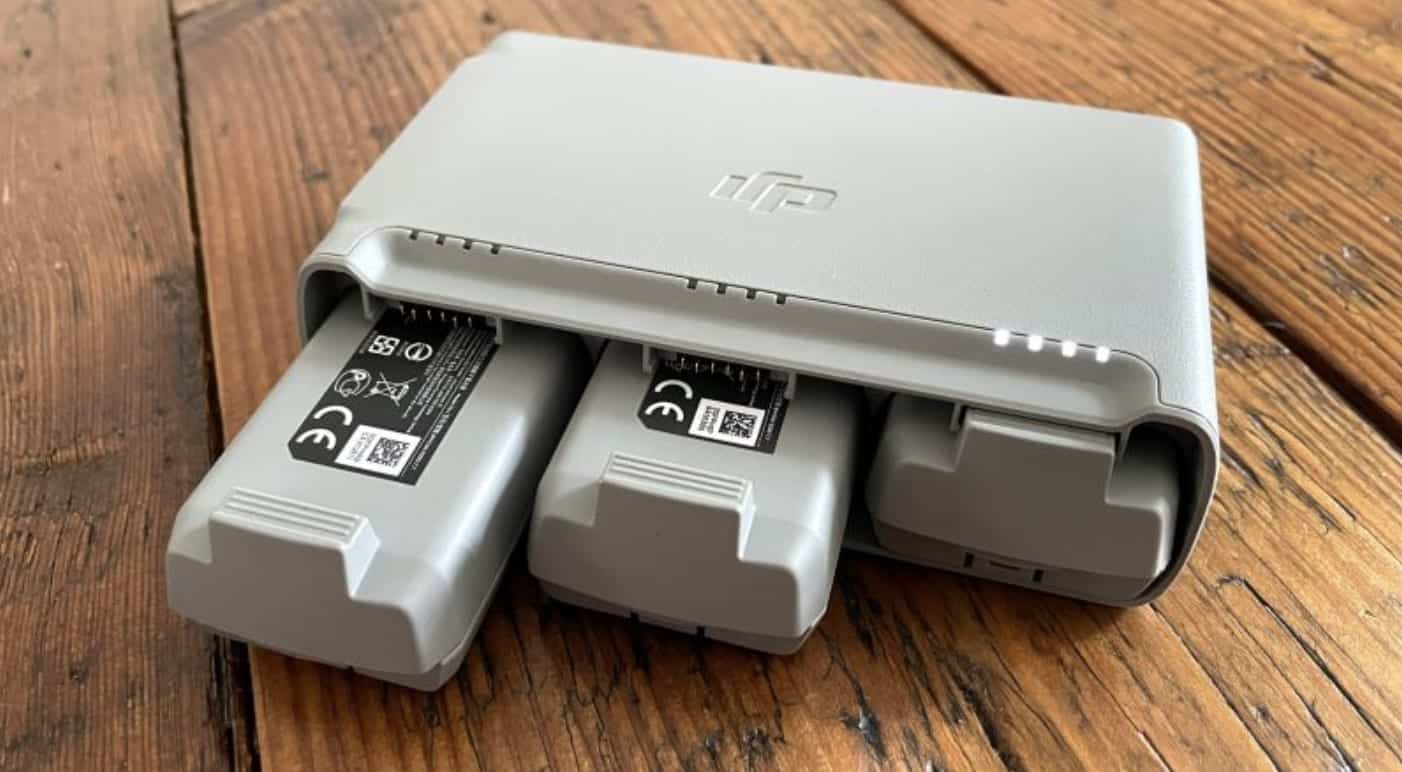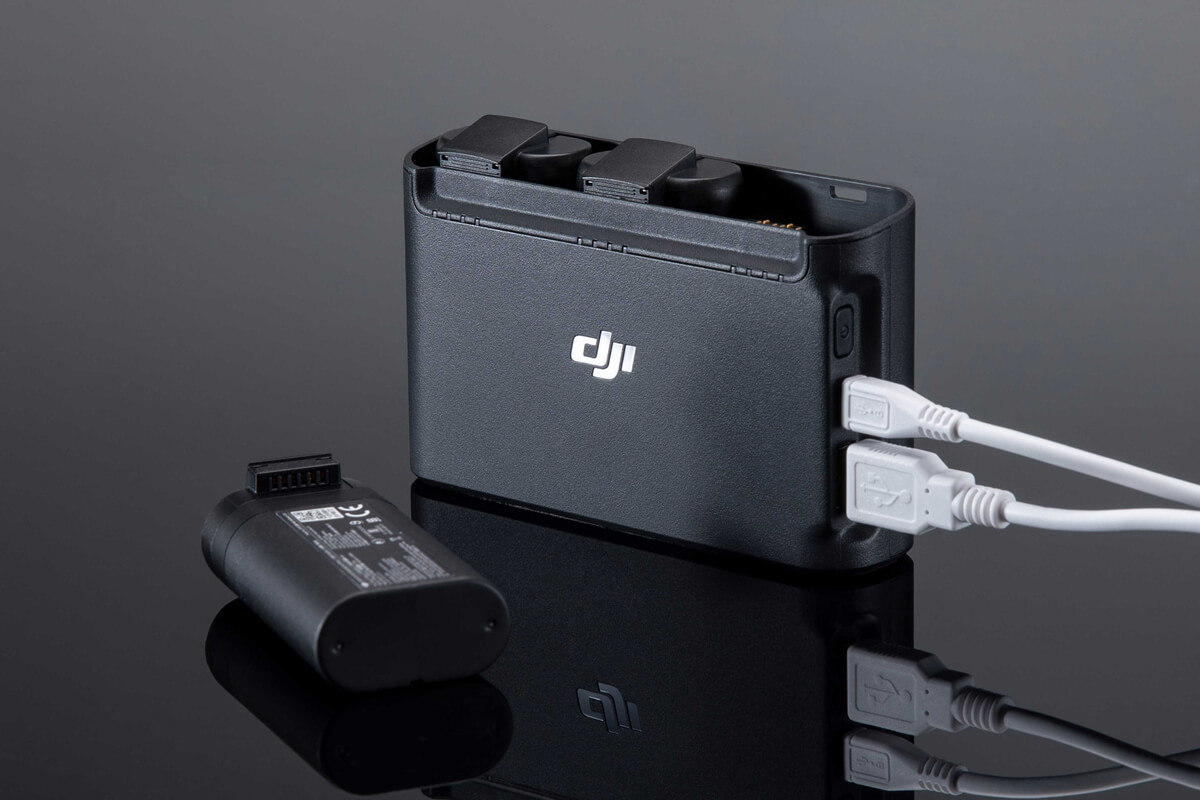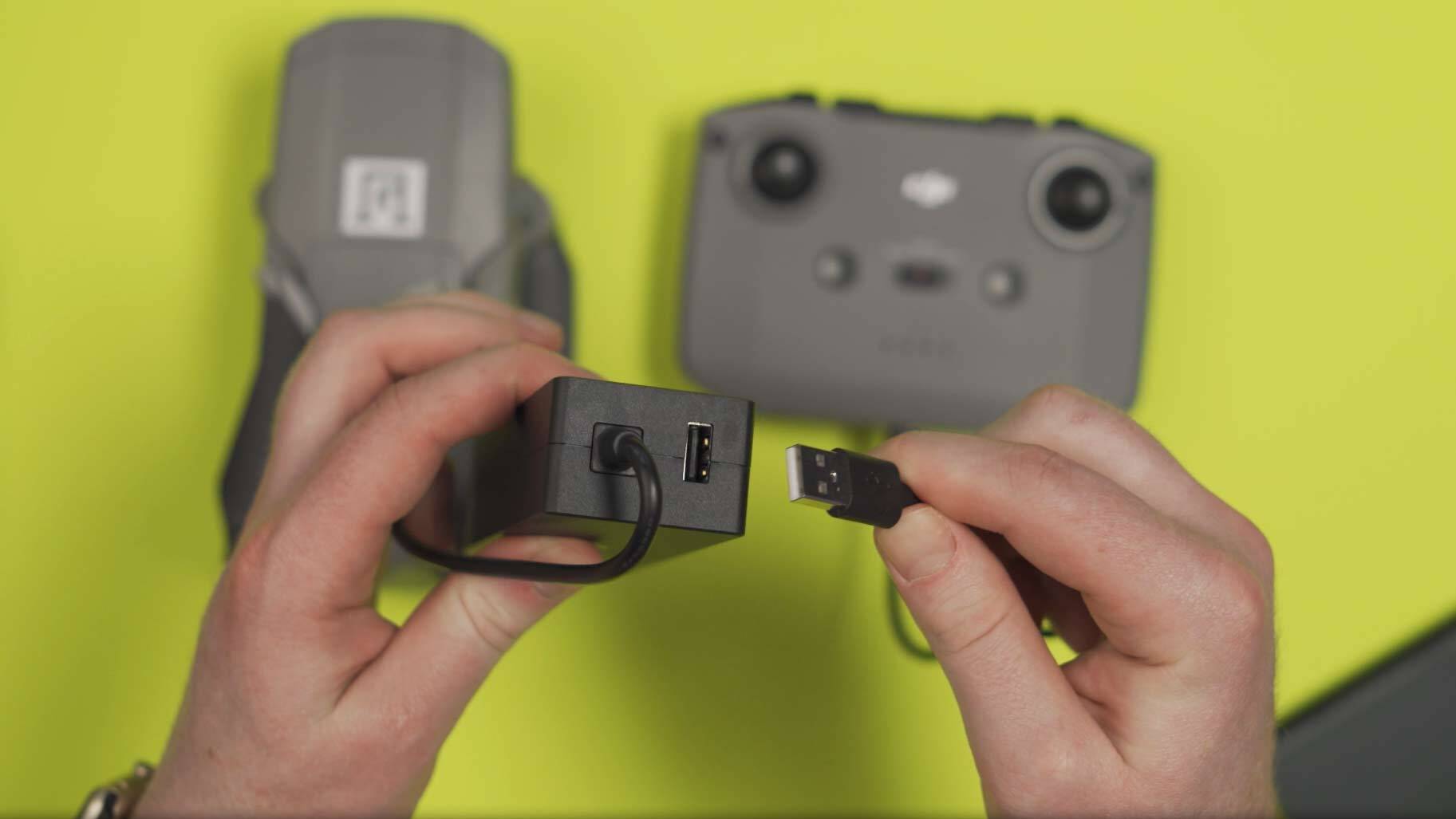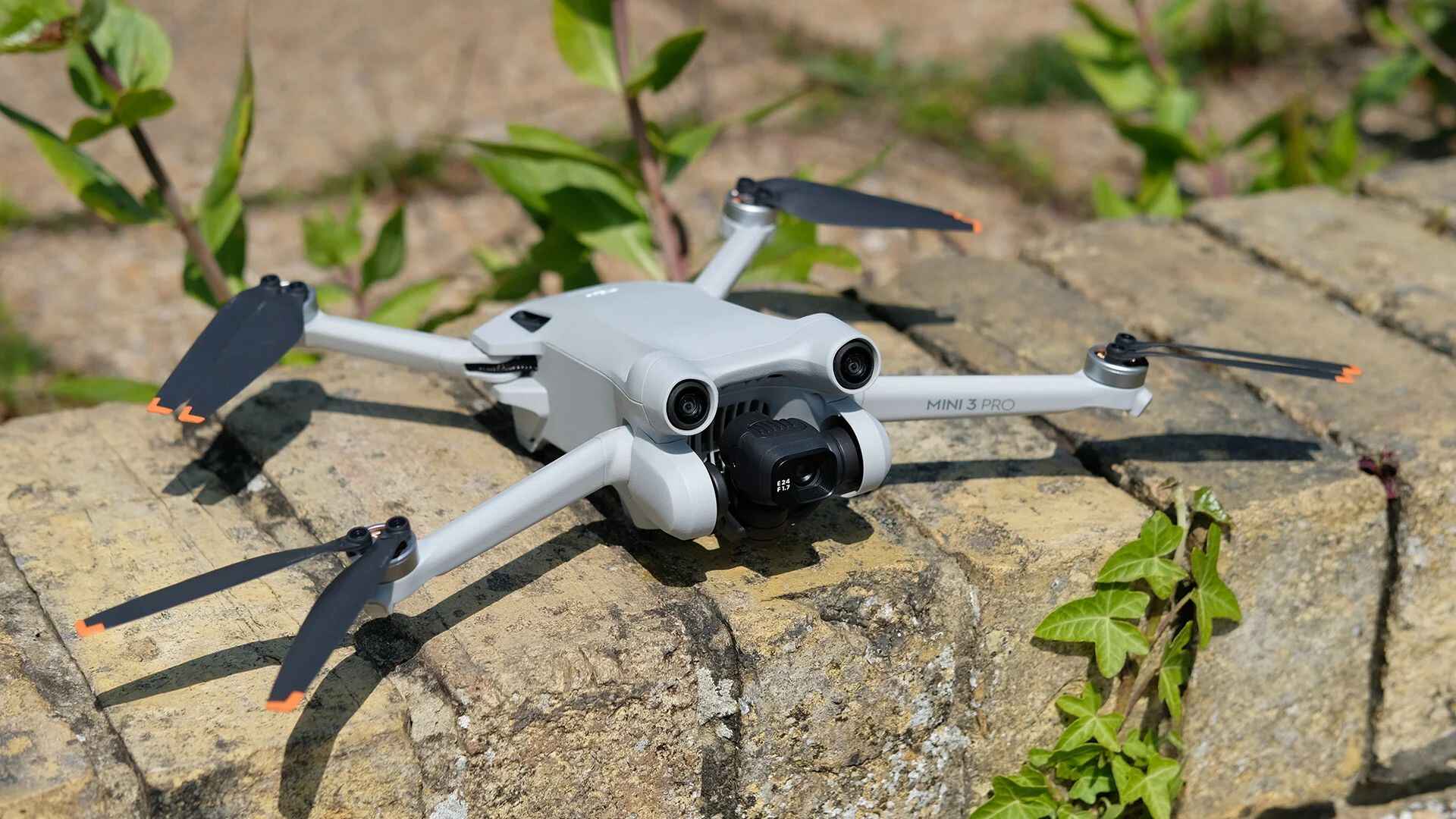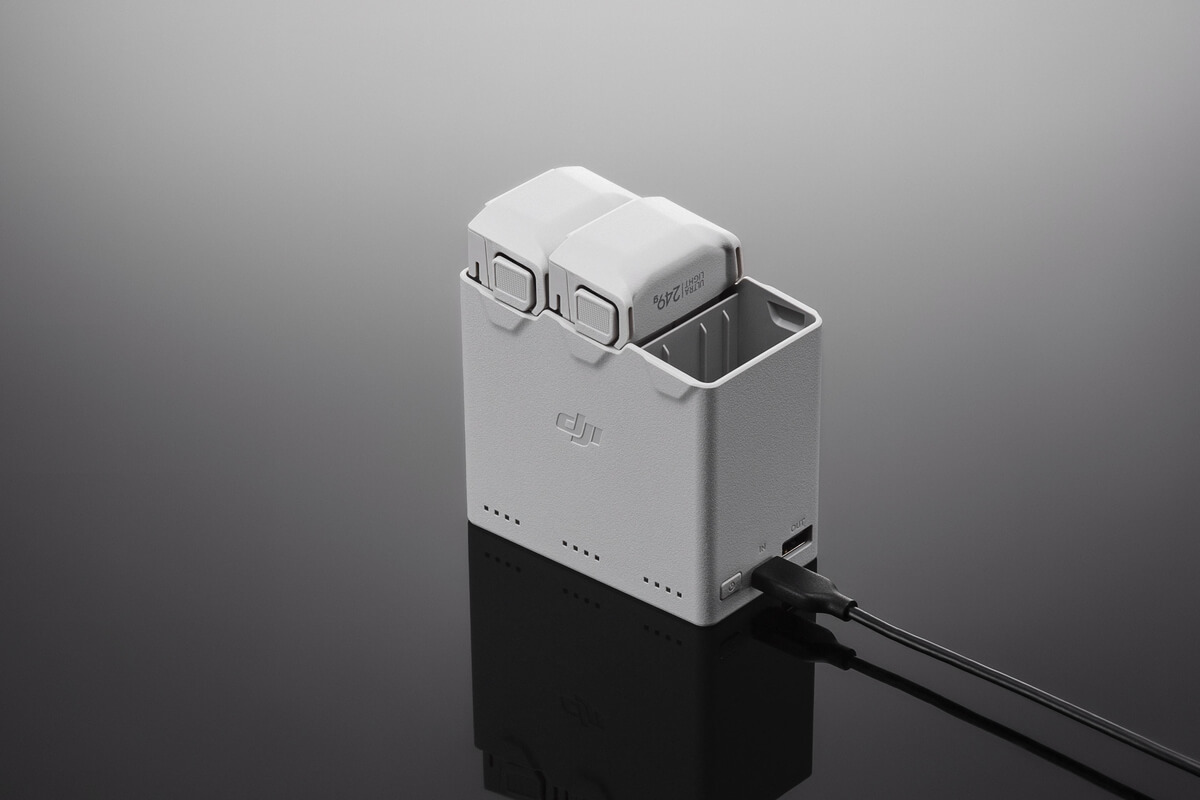Introduction
Welcome to the world of drones, where aerial photography, videography, and recreational flying are just a few clicks away. Owning a drone offers endless opportunities for capturing stunning images and exploring the skies. However, one common challenge that drone enthusiasts often face is how to charge a drone battery without a charger.
Accidents happen, and sometimes we find ourselves in situations where the drone charger is misplaced or forgotten. Don’t worry; there are alternative methods to charge your drone battery without a charger to keep you flying high. In this article, we will explore eight different methods that can help you power up your drone battery even when your dedicated charger is unavailable.
Before we dive into the various methods, it’s important to note that the compatibility and safety of charging methods may vary depending on the specific drone model and battery. Always refer to your drone’s user manual for specific guidelines and precautions to ensure the safe charging of your drone battery.
Now, let’s explore these alternative methods and get you back in the air:
Method 1: USB Charging
If your drone battery has a USB port, you’re in luck! USB charging is one of the easiest and most convenient methods to charge your drone battery without a charger. Many drones on the market today come equipped with a USB port for charging purposes.
To begin, you will need a USB cable that is compatible with your drone’s battery. This cable will typically have a standard USB connector on one end and a connector that fits your drone’s USB port on the other end. Once you have the cable, follow these steps:
- Turn off your drone and remove the battery from its compartment.
- Connect one end of the USB cable to your computer or a USB power source.
- Insert the other end of the USB cable into your drone’s USB port.
- Allow the battery to charge. The time it takes to fully charge may vary depending on your drone model and battery capacity.
- Once the battery is fully charged, disconnect the USB cable from both your drone and the power source.
- Reinstall the battery into your drone, ensuring it is securely in place.
It is important to note that USB charging may take longer than using a dedicated charger, as the power output from USB ports is typically lower. Additionally, some drones may have a safety feature that prevents them from charging via USB if the battery level is too low. If this is the case, you may need to charge the battery partially using another method before attempting USB charging.
USB charging provides a convenient solution in situations where a dedicated charger is not available. However, be sure to monitor the charging process and follow safety guidelines to prevent any potential risks or damage to your drone battery.
Method 2: Power Bank
A power bank can be a lifesaver when it comes to charging your drone battery without a dedicated charger. Power banks are portable battery packs that can provide a source of power on the go. They are commonly used to charge smartphones and other electronic devices, but they can also be used to charge your drone battery.
To charge your drone battery using a power bank, follow these steps:
- Ensure that your power bank has enough charge. If it’s low, recharge it prior to using it for your drone battery.
- Turn off your drone and remove the battery from its compartment.
- Connect one end of a USB cable to the power bank.
- Insert the other end of the USB cable into your drone’s USB port.
- Power on the power bank to start the charging process.
- Allow the battery to charge. The time it takes may vary depending on the capacity of your drone battery and the power output of the power bank.
- Once the battery is fully charged, disconnect the USB cable from both your drone and the power bank.
- Reinstall the battery into your drone and ensure it is securely in place.
Power banks come in various capacities, so the charging time may vary. It is advisable to choose a power bank with a higher capacity to ensure it can provide sufficient power for your drone battery. Additionally, some power banks may have multiple USB ports, allowing you to charge multiple batteries simultaneously if your drone allows it.
Remember to always use a reliable and reputable power bank to ensure the safety of your drone battery. It is crucial to follow the manufacturer’s guidelines and specifications for charging your drone battery with a power bank.
Method 3: Laptop or Computer USB Port
If you’re in a pinch and need to charge your drone battery without a charger, you can utilize the USB ports on your laptop or computer. Most laptops and computers have one or several USB ports that can serve as a power source for your drone battery.
Here’s how you can charge your drone battery using a laptop or computer USB port:
- Turn off your drone and remove the battery from its compartment.
- Ensure that your laptop or computer is connected to a power source to prevent any power fluctuations.
- Connect one end of a USB cable to the USB port on your laptop or computer.
- Insert the other end of the USB cable into your drone’s USB port.
- Allow the battery to charge. The time it takes to fully charge may vary depending on your drone model and the power output of your laptop or computer USB port.
- Once the battery is fully charged, disconnect the USB cable from both your drone and the USB port.
- Reinstall the battery into your drone, ensuring it is securely in place.
It’s important to note that the power output from laptop or computer USB ports may be lower than dedicated chargers or power banks. This means that the charging time may be longer compared to using a dedicated charger. Additionally, some laptops may have a power-saving mode that limits the power output of their USB ports. In such cases, charging your drone battery via a laptop USB port may not be feasible.
Using a laptop or computer USB port to charge your drone battery can be a convenient option when other charging methods are not available. However, it’s crucial to monitor the charging process and ensure that your laptop or computer remains powered during the charging process to avoid interruptions.
Method 4: Car Charger
If you are on the move and need to charge your drone battery, using a car charger can be a practical solution. Most car chargers are designed to provide power to various electronic devices, including drones.
Follow these steps to charge your drone battery using a car charger:
- Turn off your drone and remove the battery from its compartment.
- Ensure that your car is running or the ignition is turned on to provide power to the car charger.
- Connect the car charger to your car’s cigarette lighter socket or USB port.
- Connect one end of a USB cable to the car charger.
- Insert the other end of the USB cable into your drone’s USB port.
- Allow the battery to charge. The charging time may vary depending on your drone model and the power output of your car charger.
- Once the battery is fully charged, disconnect the USB cable from both your drone and the car charger.
- Reinstall the battery into your drone and ensure it is securely in place.
It’s important to note that the power output from car chargers may vary depending on the specific charger. Some car chargers may provide higher power output, allowing for faster charging, while others may have a lower output. Additionally, using a car charger may drain the car battery if the car is not running or if the ignition is turned off for an extended period.
Always use a reliable and reputable car charger to ensure the safety of your drone battery. It’s also important to monitor the charging process and avoid leaving the battery unattended while charging in your car.
Charging your drone battery with a car charger can be a convenient option, especially when traveling or on outdoor adventures. Just make sure to consider the power output and the condition of your car battery before using this method.
Method 5: Solar Panel Charger
If you’re an outdoor enthusiast or find yourself in remote locations without access to traditional power sources, a solar panel charger can be an excellent option for charging your drone battery. Solar panel chargers harness the power of the sun to generate energy and charge electronic devices like drones.
Here’s how you can charge your drone battery using a solar panel charger:
- Find a suitable location with ample sunlight exposure. Ensure that your solar panel charger receives direct sunlight without any obstructions.
- Turn off your drone and remove the battery from its compartment.
- Connect your drone’s battery to the solar panel charger using the appropriate connection cable or adapter.
- Place the solar panel charger in a stable position, such as on the ground or on a flat surface, facing directly towards the sun.
- Allow the solar panel charger to absorb sunlight and convert it into energy to charge your drone battery. The charging time may vary depending on the capacity of your drone battery, the power output of the solar panel charger, and the intensity of sunlight.
- Once the battery is fully charged, disconnect the connection cable or adapter from both your drone and the solar panel charger.
- Reinstall the battery into your drone, ensuring it is securely in place.
Solar panel chargers offer a sustainable and renewable energy solution for charging your drone battery. They are particularly valuable in outdoor settings where traditional power sources are scarce or unavailable. However, it’s important to consider the weather conditions and availability of sunlight in your location, as cloudy or overcast skies can significantly affect the charging efficiency.
When using a solar panel charger, it’s recommended to monitor the charging process and ensure that the solar panel charger is properly positioned and oriented towards the sun for maximum efficiency. Be patient, as solar charging may take longer compared to other methods, but it provides an environmentally-friendly option for powering up your drone battery.
Method 6: Portable Generator
If you’re in a location without access to traditional power sources, a portable generator can be a reliable option for charging your drone battery. Portable generators provide a mobile power supply that can be used to charge electronic devices, including drones.
Here’s how you can charge your drone battery using a portable generator:
- Ensure that your portable generator is fueled and in good working condition.
- Turn off your drone and remove the battery from its compartment.
- Connect your drone’s battery charger to the portable generator’s power outlets.
- Plug the other end of the charger into your drone’s charging port.
- Turn on the portable generator and allow the battery to charge. The charging time may vary depending on your drone model and battery capacity.
- Once the battery is fully charged, disconnect the charger from both your drone and the portable generator.
- Reinstall the battery into your drone and ensure it is securely in place.
Portable generators offer a versatile and convenient power solution, especially in remote or off-grid locations. They come in various sizes and power outputs, so it’s important to choose a generator that can meet the power requirements of your drone battery charger. Additionally, ensure that you operate the portable generator in a well-ventilated area to prevent any potential risks.
Keep in mind that portable generators run on fuel, so it’s essential to have an adequate supply and to handle the fuel safely and responsibly. Also, portable generators can be quite noisy, so consider the noise levels and any regulations or restrictions in your area when using this charging method.
A portable generator can be a reliable power source and provide a convenient solution for charging your drone battery, especially when you’re in remote locations without traditional power access. Just remember to prioritize safety and follow the manufacturer’s guidelines for both the generator and drone battery charger.
Method 7: Using an External Charger
If you have access to an external charger that is compatible with your drone battery, it can be a straightforward and efficient method for charging your drone battery. External chargers are specifically designed to charge drone batteries and often provide faster and more reliable charging compared to other methods.
Follow these steps to charge your drone battery using an external charger:
- Turn off your drone and remove the battery from its compartment.
- Ensure that the external charger is powered and in good working condition.
- Connect the appropriate charging cable or adapter to the charger.
- Insert the other end of the charging cable or adapter into your drone’s battery charging port.
- Place the battery into the external charger, ensuring that it is properly aligned and secured.
- Follow the instructions provided by the charger manufacturer to begin the charging process. This may include pressing a start button or selecting the appropriate charging mode.
- Allow the battery to charge. The charging time may vary depending on your drone model and the charger’s charging speed.
- Once the battery is fully charged, disconnect the charging cable or adapter from both your drone and the charger.
- Remove the battery from the charger and reinstall it into your drone, ensuring it is securely in place.
Using an external charger is convenient because it is specifically designed for charging drone batteries. This means that it can provide an optimal charging experience and ensure the longevity and safety of your drone battery. However, it’s important to use a charger that is compatible with your specific drone model to avoid any compatibility issues or damage to the battery.
It’s worth noting that some drones may require proprietary charging cables or adapters that are specific to the external charger provided by the drone manufacturer. In such cases, it’s essential to use the recommended charging accessories to ensure compatibility and safe charging.
An external charger provides a reliable and efficient method for charging your drone battery. It is especially useful when you have the charger readily available, offering a hassle-free way to keep your drone powered up and ready for your next aerial adventure.
Method 8: Using a Universal Charging Adapter
If you find yourself without a dedicated charger for your drone battery, a universal charging adapter can come to the rescue. A universal charging adapter is a versatile device that can accommodate various battery types and sizes, making it a convenient option for charging your drone battery.
Here’s how you can charge your drone battery using a universal charging adapter:
- Turn off your drone and remove the battery from its compartment.
- Select the appropriate connectors or adapters that are compatible with your drone battery. Universal charging adapters usually come with a range of connectors to fit different battery types.
- Connect the appropriate connectors or adapters to the charging adapter.
- Insert the other end of the connectors into your drone’s battery terminals, ensuring a secure connection.
- Plug the charging adapter into a power source, such as a wall outlet or a power strip.
- Start the charging process by following the instructions provided with the universal charging adapter. This may involve setting the appropriate charging mode or selecting the desired charging current.
- Allow the battery to charge. The charging time may vary depending on your drone model, battery capacity, and the charging specifications set by the universal charging adapter.
- Once the battery is fully charged, disconnect the charging adapter from both your drone and the power source.
- Reinstall the battery into your drone and ensure it is securely in place.
One advantage of using a universal charging adapter is its versatility. It can be used to charge various battery types, including those used in different drone models. However, it’s crucial to choose a charging adapter that supports the specific voltage and current requirements of your drone battery to avoid damaging the battery or reducing its lifespan.
Universal charging adapters often come with adjustable charging current options, enabling you to customize the charging process based on your battery’s specifications. It’s essential to refer to your drone’s user manual or manufacturer’s guidelines to determine the appropriate charging current for optimal charging performance.
A universal charging adapter offers flexibility and convenience, allowing you to charge your drone battery even without a dedicated charger. Just ensure that the connectors and adapters are securely connected and follow the guidelines provided by the charging adapter manufacturer for safe and efficient charging.
Conclusion
Charging your drone battery without a dedicated charger can be a challenging situation, but with these eight alternative methods, you have a range of options to keep your drone powered up and ready for flight. Whether you’re in a remote location, traveling, or simply unable to find your charger, these methods offer practical solutions to get your battery charged and your drone back in the air.
USB charging provides a convenient option, utilizing the USB port on your drone to connect it to a power source such as a computer or power bank. Laptop or computer USB ports can also serve as a viable option if you have access to them. Car chargers provide a portable and accessible solution when you’re on the road, while solar panel chargers and portable generators offer environmentally friendly and off-grid charging options.
If you have access to an external charger that is compatible with your drone battery, it can provide fast and efficient charging. And if all else fails, a universal charging adapter can come to the rescue by accommodating different battery types and sizes.
When utilizing these alternative charging methods, it is essential to prioritize safety and follow the guidelines provided by your drone’s manufacturer. Be mindful of the power output, charging currents, and compatibility to ensure efficient and safe charging. Additionally, always monitor the charging process and avoid leaving the battery unattended.
Now that you have a range of options at your disposal, you can confidently charge your drone battery even without a dedicated charger. Keep exploring and capturing breathtaking aerial footage with your fully charged drone battery, and let nothing hold you back from your next extraordinary adventure in the skies. Happy flying!







